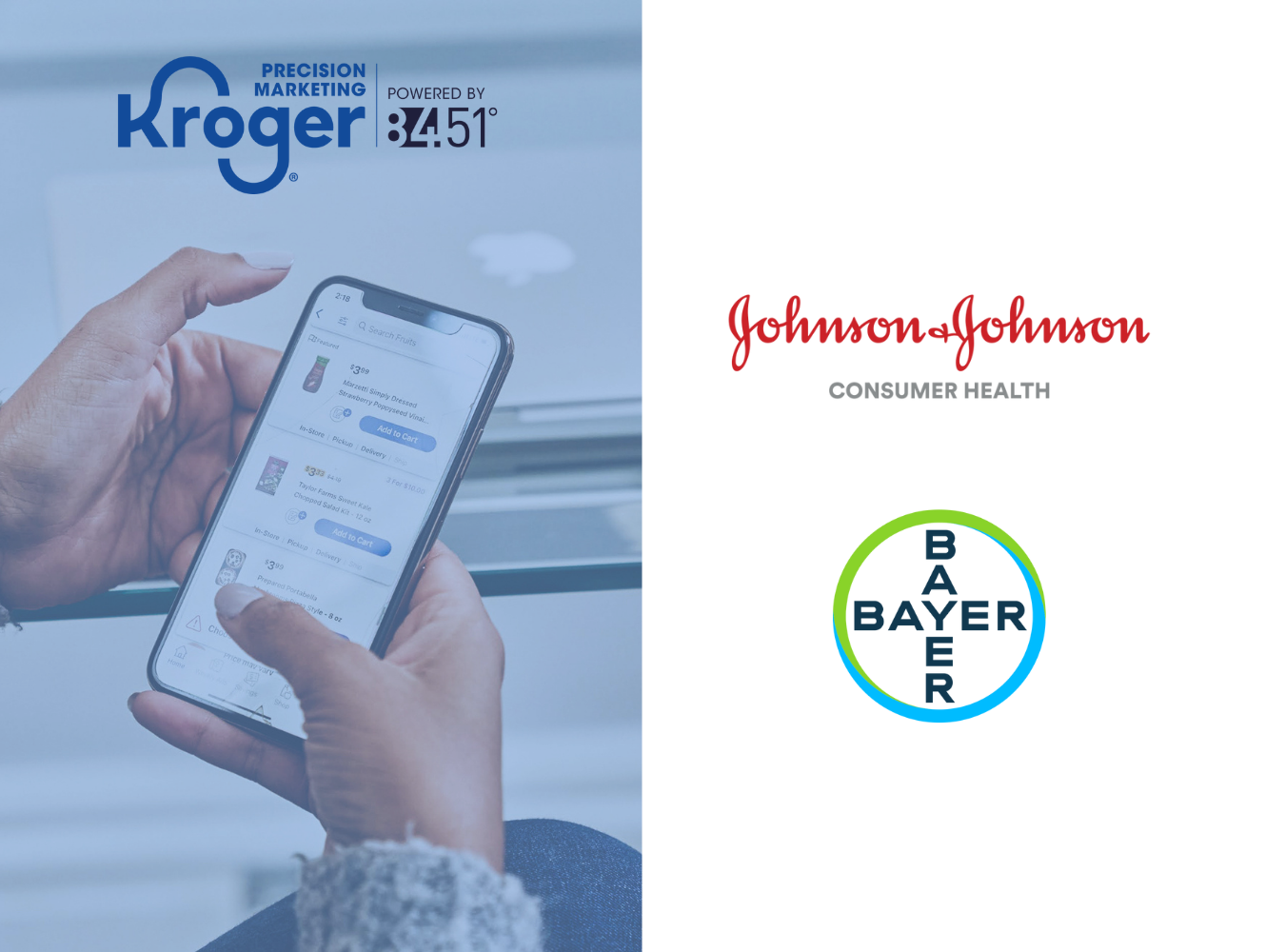
Bayer and Johnson & Johnson Consumer Health see new opportunities in retail media

As new shopping habits emerge, brands are working today to shape tomorrow’s purchase routines.
In their session at the Brand Innovators Evolution of Retail & Commerce Summit, Kroger Precision Marketing’s Brian Spencer talked with Johnson & Johnson Consumer Health’s Jordan Witmer and Bayer’s Rafael Almeida about how brands leverage retail media to pioneer the future of shopping. Here are a few takeaways from their discussion.
Evolving shopper behaviors prompt new ways of working
During the last two years, all the disruption in shopping behavior created new obstacles—and opportunities—for brands to reach consumers.
“What we're seeing is a shift from walking into a physical store to shopping in a digital space,” said Witmer, who leads retail media and performance marketing at Johnson & Johnson Consumer Health. “The opportunity for CPGs is to follow the consumer to that last decision point.” Traditionally, this moment happened in-store. Today, the moment of truth could happen on a mobile app, in a social media ad, on the retailer’s website, or other digital touchpoints.
“If your consumer is there, that's an opportunity for you to influence their decision right at the purchase point—which is really impactful for brands,” Witmer said.
The shift to digital impacts more than just online shopping carts. The online journey can also shape the in-store experience. “Shoppers start online by reading reviews and comparing products, then locate the items they want through a retailer’s app before heading to the store,” said Almeida, who is head of retail media activation for Bayer Consumer Health. “How do we think about this digital shelf space in a more strategic way?”
Leveraging the boom in retail media
Deemed the “third wave” of digital advertising, retail media has boomed in recent years as it enables brands to optimize media based on outcomes rather than guesswork. As this relatively new channel develops, different CPGs see retail media through varying lenses.
For Almeida, retail media is the channel that connects retailers and brands. “You're greeting shoppers in a place they're ready to buy, and have the opportunity to reach them right there,” he said.
Witmer agreed that retail media provides highly effective net-new inventory at the point of sale—such as on the retailer’s app or website. But retail media goes beyond ads on the retailer’s digital properties.
“It's a new way to think about how you build your audiences or optimize your media in-flight, different ways to reach your consumers on social media and on the open web,” he said. “Your strategies really don't change much. It's just a different way in.”
How retail data unlocks unique insights
Not only does retail media provide a different touchpoint, it also offers brands a different data set to work with. By tapping into a retailer’s first-party data, brands are discovering new insights about their consumers.
“With retail data, you find out whether your beliefs about your channel or your category are true,” Witmer said. Often, marketers start their retail media journey based on existing assumptions—going after lapsed brand buyers, for instance. “You might dig into the data and find out that, depending on your category, your brand doesn’t really have loyal customers. Or maybe your loyal customers are too small to impact your business,” he said.
Having worked with multiple retail media networks, Almeida noticed that different retailers have different shopper profiles. Household income, demographics, even specific SKU preferences may vary by retailer.
“That's really interesting because the data can help brands make their advertising resonate with that consumer in a very specific way,” he said. “Retail media enables you to put the consumer at the center of the equation.”
With so much data to draw from, Witmer advises the brands he works with to avoid information overload. “This channel creates so many layers and ways you can ask questions,” he said. “Don’t try to do all of the things that this channel can do. Just keep it simple and achieve your brand objective.”
Changing the equation for media measurement
Measurement is another area where retail media shines. Sales data allows brands to understand the business impact of media - changing how they think about media performance.
Most marketers use marketing mix modeling or multi-touch attribution models as their main source of truth. But while these models provide a comprehensive, precise view of a brand’s marketing efforts, they take months to produce.
“What retail media offers is an opportunity to move faster,” Witmer said. “When you see big gaps in a campaign, you can make changes with who you're advertising to or where you're placing ads.” When brands see how a campaign performs in real-time—rather than months after the campaign ends—they can amp up the effectiveness of the spend.
Another consideration of media measurement: short-term vs. long-term goals. What you measure with your retail media depends on your brand objectives.
“The balance depends on what the brand needs today, what they're trying to achieve in the long term and what they want to be,” Almeida said. “That will be different for every single brand in the portfolio. It's important to talk to brand stakeholders, identify gaps, and determine what's the overall mission they're trying to achieve with their media investments."
Innovative marketers will continue to explore new opportunities to leverage retail media as ecommerce and social shifts continue to impact how people shop.
*This conversation was originally livecast on January 18, 2022, as part of the Brand Innovators Evolution of Retail & Commerce Summit. Highlights are published here with permission from Brand Innovators. *
Visit our knowledge hub
See what you can learn from our latest posts.

